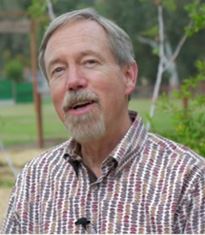Reblogged from Integral Permaculture
The Permaculture City: Regenerative Design for Urban, Suburban, and Town Resilience by Toby Hemenway is a welcome articulation of permaculture applied to cities.
For those of you who’ve read Gaia’s Garden, Toby Hemenway’s first permaculture book (which is the best-selling permaculture book in the world), you know that Hemenway writes in a straight-forward style that is easy to follow and digest, and a pleasure to read. While Gaia’s Garden was a practical permaculture book applied to home-scale gardening, the new book emphasizes from the very beginning that permaculture is not to be understood as a style of organic gardening.
He writes, “Urban permaculture is only slightly about gardening, and mostly about people. The human ecosystem that is the city is rich, and it includes much more than food. To understand, work within, and enhance that ecosystem, we need to understand not just how we feed ourselves in cities and towns but how we meet all our needs. How do we build, move about, use water and energy, feel secure, make decisions, solve problems, sustain ourselves, develop policies, live together?
…We’re not just gardening plants but people, neighborhoods, and even cultures.”
Hemenway defines permaculture as:
“applied ecology; that is, it is a design approach based on finding and applying to our own creations some of the guiding axioms at work in natural ecosystems.”
And as:
“a set of decision-making tools, based on natural systems, for arriving at regenerative solutions to design challenges of all kinds.”
Contents
Introduction: Looking at Cities through a Permaculture Lens (read online here)
1. The Surprisingly Green City (read online here)
2. Permaculture Design with an Urban Twist
3. Designing the Urban Home Garden
4. Techniques for the Urban Home Garden
5. Strategies for Gardening in Community
6. Water Wisdom: Metropolitan Style
7. Energy Solutions for Homes and Communities
8. Livelihood, Real Wealth, and Becoming Valuable
9. Placemaking and the Empowered Community
10. Tools for Designing Resilient Cities
“Many people who are searching for a more fulfilling life, wanting to reduce their ecological footprint and buld resilience for uncertain futures, grasp that permaculture might be part of the solution but are often unsure how it applies to their particular situation. For residents of towns and cities in the modern affluent world, The Permaculture City shows how permaculture design makes common sense.”
– David Holmgren
If you’re in the Pacific Northwest, come out to hear Toby speak about the new book. 9/9 Eugene, 9/10 Corvallis, 9/11 Portland, 9/12 Portland, 9/13 Olympia, 9/14 here in Bellingham (our Transition Whatcom event listing is here, and on Facebookhere), 9/15 Seattle, and 9/16 Ashland.
More info: http://tobyhemenway.com/speaking/
Here is an excellent interview with Toby about his new book, posted....
Below is another excellent interview from The Permaculture Podcast with Scott Mann.
I echo Mann’s observation after the interview:
“To me this book and the interview you just heard are vital to changing the conversation about permaculture away from just the landscape and growing food, as these are problems that are technically solved. We know how to raise up plants from seed, cutting, or graft. We understand the techniques to use in a wide variety of situations in any climate, even if that means making modifications to the land through ponds or swales, or creating physical structures such as greenhouses or stone walls as thermal mass. Conventional and organic agriculture have a lot of information for us to pull from, as do the rapidly growing fields of agro-forestry and agro-ecology. Where things go sideways is in reaching a larger audience with these ideas, not just in mainstream culture, but also in the permaculture community at large.
…But now, 40 years since the beginning we need to go back and dig through Mollison’s big black book of permaculture and remember Chapter 14: Strategies for an Alternative Nation. We need to learn how to build and work in community with one another. Now that the thorny pioneers have blazed a trail into the depths of the jungles, plains, and cities, and there set down roots, we have flourished in the shade of their experience and the work that came before us long enough. Now the specialists can come in. The growers, the builders, the organizers, and the communicators, to fill in the gaps and expand to reach all aspects of human life. We have the potential for permanent human agriculture, now let’s work on building that permanent human culture, and retain the aspects of civilization that matter to us.”
© 2025 Created by David MacLeod.
Powered by
![]()

